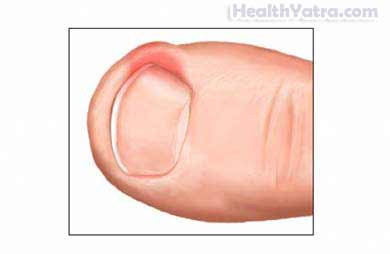Definition
This is surgery to remove a toenail that has curled and grown into the skin, causing pain.

Reasons for Procedure
The entire nail or the portion of the nail growing into the skin may be removed. It is most often done to:
- Relieve pain
- Relieve swelling or infection
- Remove a deformed nail
- Correct abnormal nail growth
Possible Complications
If you are planning to have ingrown toenail removal, your doctor will review a list of possible complications, which may include:
- Infection
- Excessive swelling or bleeding
Factors that may increase the risk of complications include:
- Diabetes
- Problems with blood circulation
What to Expect
Prior to Procedure
- Wear comfortable clothing and loose-fitting shoes.
- Arrange for a ride home.
Anesthesia
You will be given local anesthesia. Only the area that is being operated on will be numbed by an injection.
Description of the Procedure
A local anesthetic will be used to numb the toe. Using special tools, the doctor will cut the nail down towards the cuticle (bottom of the nail). Then either the whole nail or part of the nail will be pulled off. A chemical may be put on the cuticle to prevent the nail that was removed from growing back.
How Long Will It Take?
Less than 1 hour
How Much Will It Hurt?
It will likely hurt some when the doctor injects the anesthetic into your toe. During the procedure, you will not feel pain, but you will feel pressure and tugging. After the procedure, you will likely have some pain. Your doctor may give you pain relievers.
Post-procedure Care
When you return home, do the following to help ensure a smooth recovery:
- Do not put weight on the affected toe.
- If needed, take pain medicine.
- Keep your foot elevated when possible.
- Ask your doctor about when it is safe to shower, bathe, or soak in water.
- If your doctor says it is okay, soak your toe in warm water for 10-20 minutes. Do this 2-3 times a day for one week.
- Keep a clean, dry dressing over the toe for the first few days.
- Apply the prescribed antibiotic cream or ointment to the area if advised to do so by your doctor.
- Wash your hands before caring for the nail area or changing the dressing.
- Wear cotton socks and loose fitting shoes for about two weeks.
- Do not run or engage in strenuous activities until the toe is healed. You may need to wait two weeks.
- Be sure to follow your doctor’s instructions .
- If your toe is infected, do not touch the antibiotic with your finger. Instead, put a small dab of the cream on a clean dressing. Use that dressing to apply the medicine to your toe.
- To avoid future ingrown nails:
- Do not wear high heels or shoes that fit poorly.
- Trim your toenails straight across. Do not pick or tear at them.
Complete healing takes about 2-3 weeks. This will not interfere with most activities. If the entire nail was removed, your body will create a hard skin in its place. After the skin has covered the sensitive area, you can resume normal activities.
Call Your Doctor
After arriving home, contact your doctor if any of the following occurs:
- Signs of infection, including fever and chills
- Redness, swelling, increasing pain, excessive bleeding, or discharge from the wound
- Chalky white, blue, or black appearance to skin of toes or foot
In case of an emergency, call for medical help right away.
